Why the US Visa Bulletin 2025 Matters More Than Ever
If you’re waiting for your US Green Card, the US Visa Bulletin 2025 is your most crucial monthly update.
This official bulletin, published by the US Department of State (DOS), determines when visa applicants can move forward with immigrant visa interviews or adjustment of status applications.
As the US government modernizes its immigration systems post-pandemic, 2025 is shaping up to be a transformative year for priority date movements, backlogs, and policy changes.
Whether you’re an employment-based or family-based applicant, understanding how the Visa Bulletin works and how to predict future movement could save you months — or even years — of waiting.
What Is the US Visa Bulletin 2025?
The US Visa Bulletin is a monthly publication by the US Department of State (DoS) that outlines which priority dates are current across various immigrant visa categories.
Each applicant’s priority date marks their place in line for an immigrant visa or Green Card, based on:
- The category (family or employment-based)
- The country of chargeability (usually your country of birth)
- The visa quota limits set by US law
When your priority date becomes “current”, it means your Green Card application can be processed — either through the National Visa Center (NVC) or via USCIS adjustment of status (Form I-485).
Understanding Priority Dates in 2025
Each category of US immigration — F1, F2A, EB2, EB3, and so on — has a quota. Once that annual quota fills up, applicants must wait for the next fiscal year’s allocation.
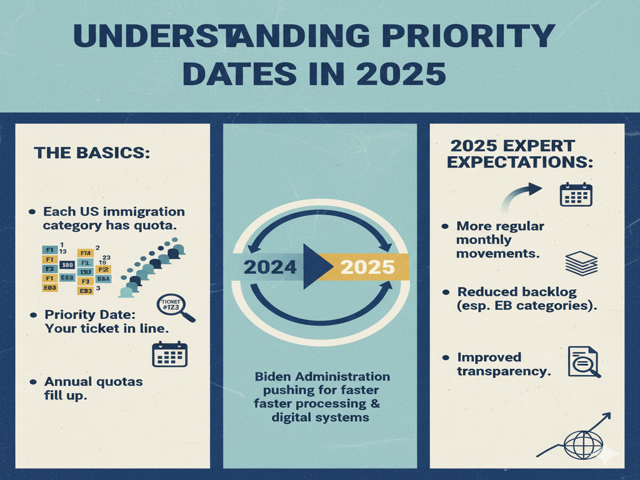
The priority date is essentially your ticket number in the immigration line.
In 2025, as the Biden administration pushes for faster processing and improved digital systems, experts expect:
- More regular monthly movements in priority dates.
- Reduced backlog for some employment-based categories.
- Improved transparency in the Visa Bulletin updates.
US Visa Bulletin 2025 Structure
Each Visa Bulletin includes two key charts for each category:
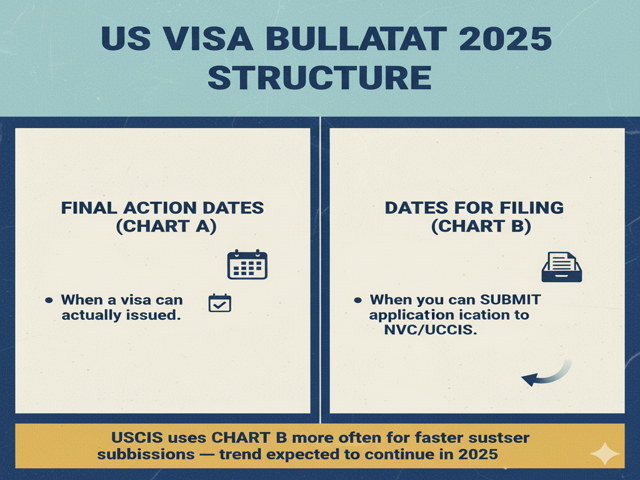
- Final Action Dates (Chart A) — When a visa can actually be issued.
- Dates for Filing (Chart B) — When you can submit your application to the NVC or USCIS.
In recent years, USCIS has allowed applicants to use Chart B more often for faster submissions — a trend expected to continue in 2025.
Family-Based US Visa Bulletin 2025 Predictions
Family-sponsored immigration remains one of the most backlogged areas, but 2025 might bring a modest acceleration thanks to digital improvements and post-COVID normalization.

Predicted Movements by Category
| Category | Description | Expected 2025 Movement |
|---|---|---|
| F1 | Unmarried Sons/Daughters of US Citizens | 2–4 weeks monthly |
| F2A | Spouses & Children of Green Card Holders | Remain current |
| F2B | Unmarried Sons/Daughters (21+) of LPRs | 1–2 weeks monthly |
| F3 | Married Sons/Daughters of US Citizens | 2–3 weeks monthly |
| F4 | Siblings of US Citizens | Slow movement (1 week/month) |
Family-based categories are influenced heavily by country caps — especially for India, Mexico, and the Philippines, where demand far exceeds supply.
Employment-Based US Visa Bulletin 2025 Predictions
The employment-based categories (EB1, EB2, EB3, EB4, EB5) are expected to show steady progress as USCIS clears pandemic-era backlogs.
| Category | Description | Predicted 2025 Trend |
|---|
| EB-1 | Priority Workers (Managers, Researchers) | Likely to stay current globally |
| EB-2 | Advanced Degree Professionals | 1–2 month advancement quarterly |
| EB-3 | Skilled Workers, Professionals | 2–3 months movement quarterly |
| EB-4 | Religious Workers, Certain Employees | Gradual backlog clearance |
| EB-5 | Investors ($800k+) | Rapid advancement in set-aside categories |
India and China remain the biggest question marks for EB-2 and EB-3 categories. However, the Visa Bulletin 2025 might finally bring more consistent movement after two years of stagnation.
Expert Insight: Why Priority Dates Move Slowly
Visa movement depends on:
- Annual green card limits (set by Congress)
- Country caps (7% per country)
- Demand vs. usage rates
- USCIS and consular processing speed
In 2025, both DoS and USCIS are focusing on better coordination to avoid wasting unused visas — a recurring issue that left thousands of green cards unissued in 2021–2023.
Priority Date Predictions for India, China & Mexico
These three countries represent the heaviest backlogs across family and employment categories.
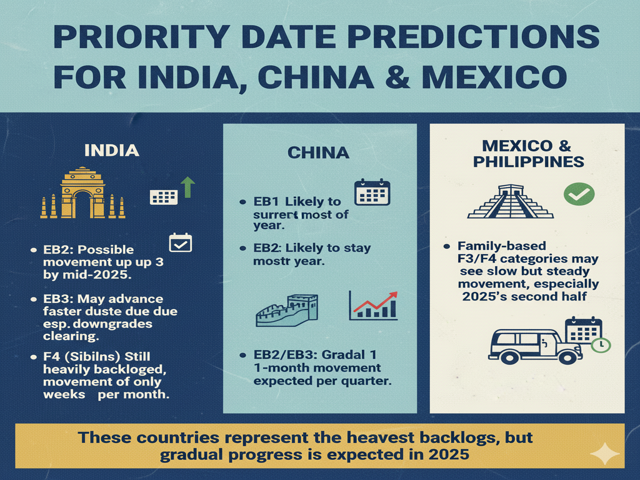
India
- EB2: Possible movement up to 3 months by mid-2025.
- EB3: May advance faster due to downgrades clearing.
- F4 (Siblings): Still heavily backlogged, movement of only weeks per month.
China
- EB1: Likely to stay current most of the year.
- EB2/EB3: Gradual 1-month movement expected per quarter.
Mexico & Philippines
- Family-based F3/F4 categories may see slow but steady movement, especially in 2025’s second half.
How to Check the Latest US Visa Bulletin 2025
To stay updated monthly:
Official Source: U.S. Department of State Visa Bulletin
You can also subscribe to USCIS updates to see whether they’re using the Final Action or Dates for Filing chart each month.
How to Read the US Visa Bulletin 2025 Step-by-Step
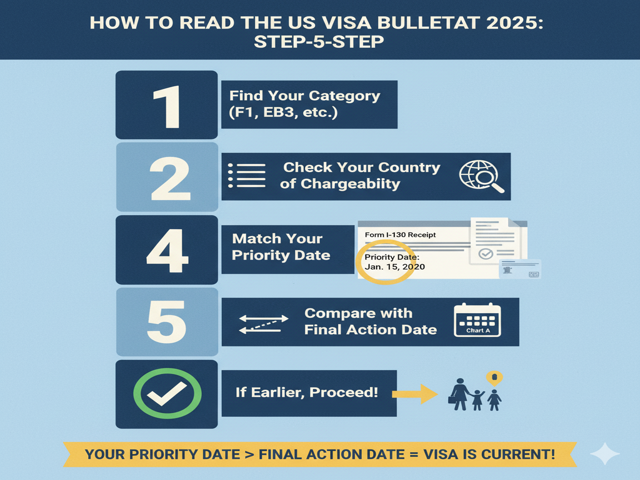
- Find your category (F1, EB3, etc.)
- Check your country of chargeability (usually your birth country)
- Match your priority date from Form I-130 or I-140 receipt
- Compare with the current month’s Final Action Date
- If your date is earlier, your visa is current and you can proceed
USCIS 2025 Policy Changes Affecting Priority Dates
In 2025, expect the USCIS to expand the use of digital forms, improve real-time tracking, and coordinate better with the Department of State to prevent visa wastage.
New AI-driven document review tools could reduce processing time — a critical shift for employment-based visas.
Family Reunification and Visa Spillover in 2025
A key prediction for 2025: spillover visas from family categories (unused numbers) could boost employment-based quotas, similar to what happened in 2021–2022.
This could benefit EB2 and EB3 India applicants the most.
Read Also: Green Card Application Process Guide
US Visa Bulletin 2025: Predicted Monthly Trend Overview
| Month | Family-Based Trend | Employment-Based Trend |
|---|
| Jan–Mar | Steady progress | Slight movement |
| Apr–Jun | Stable | Backlog reduction |
| Jul–Sep | Rapid movement | Faster clearances |
| Oct–Dec | Year-end surge | EB5 expansion |
Common Questions About the US Visa Bulletin 2025
What is a Priority Date?
It’s the date your petition (Form I-130 or I-140) was filed. It determines your place in line for a visa.
When will my visa become current?
It depends on your category and country. You must monitor the Visa Bulletin monthly.
Can I work while waiting for my priority date?
If you are inside the US and have an approved EAD (Employment Authorization Document), yes.
Will the 2025 Visa Bulletin speed up Green Cards?
Most likely for EB categories, due to better coordination between USCIS and DOS.
Where can I find official updates?
Visit travel.state.gov for the official monthly Visa Bulletin.
Agent Advise: A Hopeful Year for Applicants
The US Visa Bulletin 2025 promises to be a more transparent, data-driven, and applicant-friendly system.
While visa backlogs will not disappear overnight, steady movement and improved communication from US agencies signal positive progress ahead.
If you’re waiting for your Green Card — stay informed, check monthly, and make sure your documents are ready when your date becomes current.
2025 could be your breakthrough year.

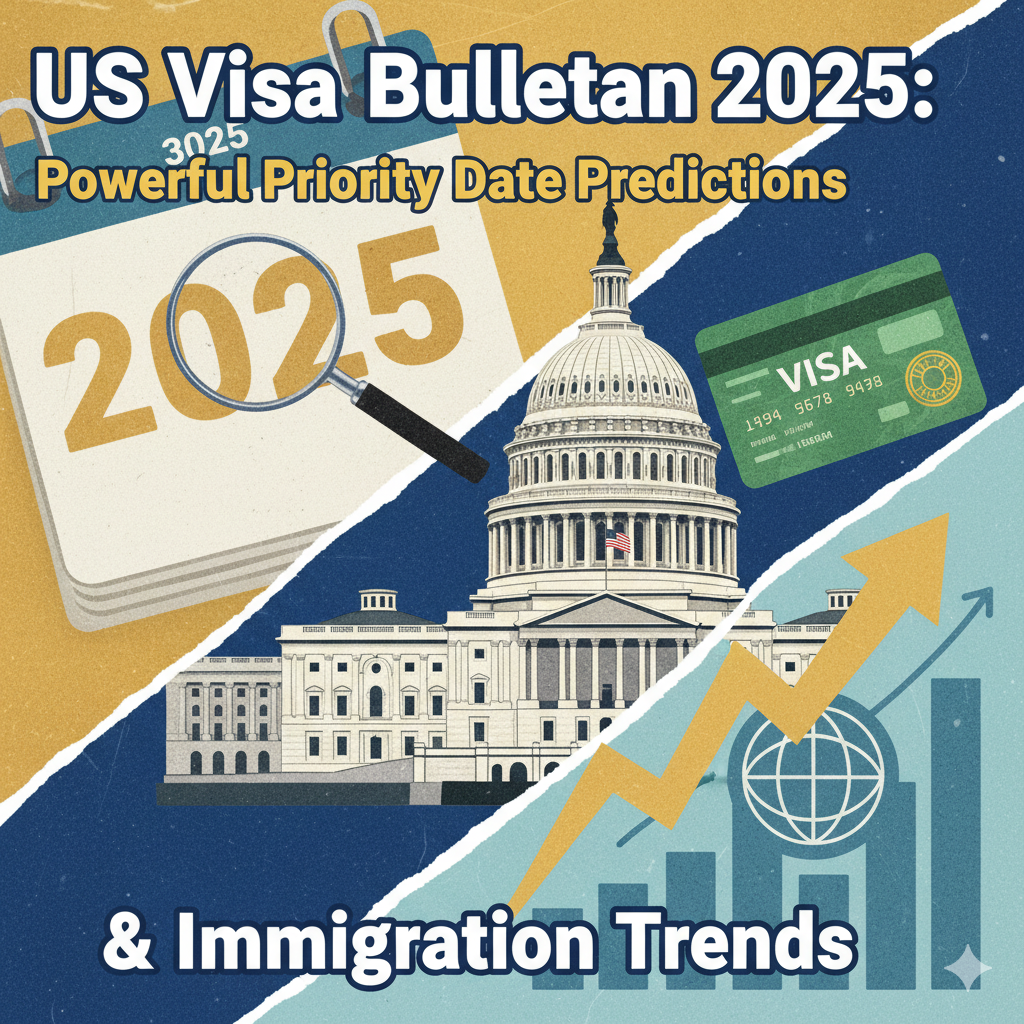


Pingback: US ESTA 2025: Powerful New Electronic Travel Requirements
Pingback: US Green Card 2025: Powerful Backlog Insights & Updates